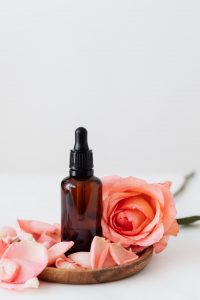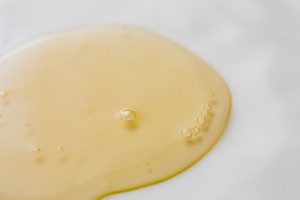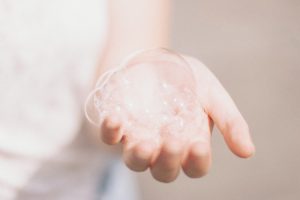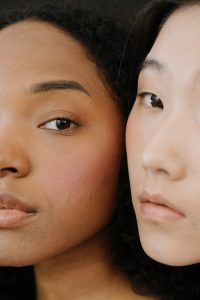LIFE IS TOO SHORT FOR TOXIC SHAMPOOS (Part 2)
Are shampoos really that toxic? How do I know if my shampoo is toxic? Should we be reading shampoo labels?
In our previous post Life is too short for toxic shampoos Part 1 we discussed five toxic ingredients commonly found in shampoos. Here in Part 2, we continue looking into toxic ingredients that turn our shampoos into products that should come with a health warning in the best of cases.
Let us begin…
- Polyethylene Glycol (PEG)
A petroleum derivative compound made of ethylene glycol, and the main ingredient in antifreeze. Widely used in cosmetics and hair care products as moisture-carrier, softener, solvent, and thickener, and in pharma as a laxative. Depending on the way in which companies manufacture PEGs, two compounds may form as by-products and be present in PEGs in measurable amounts: ethylene oxide and 1,4-dioxane.

Now not only does ethylene oxide harm the nervous system, and human development, but 1,4-dioxane has been:
- classified by U.S. Environmental Protection Agency (EPA) as “a likely human carcinogen” that ‘does not readily biodegrade in the environment”.
- In 2016 the U.S. Department of Health and Human Services National Toxicology Program (NTP) found enough reasonable evidence to declare it a human carcinogen.
- The International Agency for Research on Cancer classifies ethylene oxide as a known human carcinogen and 1,4-dioxane as a possible human carcinogen.
And while it is possible to remove 1,4-dioxane from products during manufacturing by vacuum stripping, it would be almost impossible for consumers to know whether the product they are about to pay for has been stripped or not.
But aside from ethylene oxide and 1,4-dioxane some PEG compounds themselves can cause:
- skin irritation
- are not safe to use on damaged skin
- (and due to their solubilising properties) they act as good penetration enhancers, allowing greater absorption of all those toxic ingredients. Great, right!? (not!)
- Retinyl Palmitate
Retinyl Palmitate, or palmitate, is an antioxidant and a vitamin A compound in hair, makeup, and skincare products, amongst others. It improves the appearance and feel of dry, damaged hair, giving it more body, restoring suppleness, and reducing flakiness on dry skin.
The irony is that as retinyl palmitate converts to retinol on the skin, it can cause:
- redness
- itchiness
- scaling
- peeling.

Not only that but:
- The U.S. National Toxicology Program (NTP) in a 2012 study suggested that it may speed the development of skin tumours and lesions on skin exposed to sunlight.
- The EU Scientific Committee on Consumer Safety limits its concentration on personal care products and cosmetics.
- The German Federal Institute for Risk Assessment (BfR) goes one step further by both recommending the restriction of palmitate concentrations to products for the face and hands, and warns against its addition to lip and body care products.
- Synthetic Fragrances
Synthetic fragrances or parfums are scents created in a lab usually from petroleum and natural gas byproducts. We can find them in everything from shampoo, hairspray, and deodorants to lipstick and sunscreens.
The law does not require manufacturers to disclose the individual components of a synthetic fragrance as they are considered a trade secret. That means many cosmetic and beauty care companies use fragrance as a term to hide away unsafe chemicals they would rather not list.
Again, something to note is that:

Firstly, synthetic fragrances, unlike natural fragrances, are derived from petroleum and natural gas, which are known to interfere with our natural hormone production.
And secondly, that to make a scent last longer manufacturers add fixatives like:
And we all know what good they do. Phthalates, in particular, are linked to:
- reduced sperm count and sperm quality
- altered development of genitals
- obesity
- reduced female fertility
- insulin resistance in men
Moreover, most of the thousands of chemicals in synthetic fragrances are not tested for toxicity, whether alone or together, and can trigger:
- allergies
- migraines
- skin irritation
- and can exacerbate asthma, and even contribute to its development in kids.
Fragrance is the second most common cause of allergic skin reactions in both Canada and the UK. And if you are thinking of opting for an unscented product, think again! Many unscented products contain masking agents or chemicals that cover the smell of other chemicals. So the way forward is synthetic fragrance-free all the way.
- Synthetic Colours
Synthetic colours are additives used to add colour or dye to products. They are found in everything from shampoo to lip balms, moisturisers, detergents, toothpaste, vitamins, candy, crisps… the list is almost endless.

Depending on the colour it can take up to 50 chemicals to create a single dye. And that is 50 chemicals too many when we take into account that they are made from: coal, tar, petroleum, or heavy metals such as arsenic, cadmium, chromium, or lead. Especially when synthetic colours made from coal tar are:
- a known carcinogen,
- can trigger allergies
- linked to: ADHD, skin irritation, sensitivity, breakouts, and blocked pores.
Synthetic colours make shampoos more beautiful and appealing, fragrances more enticing. But just like formaldehyde, or PEG, they also come with a long list of health warnings.
To answer the question at the beginning of this post:
- Yes, far too many shampoos are that toxic.
- They hide their toxicity behind umbrella terms such as fragrance and synthetic colours.
- They also hide them in plane view such as SLS, SLES, DEA, TEA, MEA, PEG, Parabens, Formaldehyde, Retinyl Palmitate, and Dimethicone.
- Reading labels, as boring and unappealing as that may be, has to be the new normal. That is if we really want to know whether what we are buying is toxic or not. At least until more companies like us decide to make toxic shampoo along with toxic beauty care products a thing of the past.
We believe all beauty care products should be natural, and that means leaving the toxic out and bringing nature in. For your peace of mind. Pure and simple.
Fancy reading some more?
- Drugs.com
https://www.drugs.com/mtm/polyethylene-glycol-3350.html
- European Union
- EU Scientific Committee on Consumer Safety (SCCS)
- EWG
Not So Sexy: The Health Risks of Secret Chemicals in Fragrance
- The German Federal Institute for Risk Assessment (BfR)
Vitamin A: Intake via cosmetic products should be restricted
- Green Facts
- ScienceDirect
https://www.sciencedirect.com/topics/chemical-engineering/polyethylene-glycols
- The US National Institute of Environmental Health Science (NIH)
https://seek.niehs.nih.gov/texis/search/?pr=internet-all&query=Phthalates&search_button=submit
LIFE IS TOO SHORT FOR TOXIC SHAMPOOS (Part I)
Are shampoos really that toxic? How do I know if my shampoo is toxic? Should we be reading shampoo labels?
If you are what you eat, surely you are also what you put on your hair and body. But in the increasingly health-conscious, plant-based world of ours, everyone seems to be forgetting that whatever ingredient you put in your hair, scalp, or skin is absorbed into your bloodstream too. That’s right, your hair too!
Label reading is in, and for very good reasons too, given the endless list of undesirable, filler ingredients in a lot of food products. But it seems the vast majority of people are ignoring the big elephant in the room: what about beauty care labels?? When was the last time you read and understood your shampoo label? If you have in the past 3 months, pat yourself in the back for being one of a very wise, ever-increasing, but still, minority of us that are growing more and more concerned with vague, undeclared ingredients we have simply ignored for far too long.
In a Stanford University study mice were vaccinated through shampoo thanks to hair follicles, and that has serious implications for all of us, but especially for anyone who regularly lathers his/her hair with hair products full of toxic ingredients. Formaldehyde, anyone?
Let us examine the poo in Shampoo, shall we?

- Ammonium Lauryl Sulfate, Sodium Laureth Sulfate (SLES), & Sodium Lauryl Sulfate (SLS)
Surfactants that bind oil and water together to help remove oil, whether from your skin, hair, or even dishes. It increases the spreading and wetting properties of a product, and acts as a foaming agent. But they also weaken your skin’s natural defences causing irritation, stripping natural oils from your scalp and hair, making it dry, brittle, slowing down hair growth, and causing thinning. SLS is so known to cause skin irritation that, in dermatological testing, new products are compared to SLS to check how irritating they might be to human skin.
- Diethanolamine (DEA), Triethanolamine (TEA) & Monoethanolamine (MEA)
DEA, TEA & MEA are clear, colourless organic chemical substances that act as emulsifiers and foaming agents to produce bubbles and foam, as well as to control pH levels in shampoos, hair conditioners, soaps, shaving creams, eye shadows, etc. NDEA is a known carcinogen, and both TEA & DEA have been found to produce liver cancer. DEA also affects the male reproductive system altering the sperm structure.
- Dimethicone
A type of silicone or plastic that coats your hair, supposedly to give it shine, but since it is not water-soluble no matter how many times you rinse it your hair will feel greasier, and more lifeless over time due to the coat that blocks hydration and nutrients out, causing hair loss, skin irritation, and allergic contact dermatitis. 
- Formaldehyde
A chemical that prevents microbes from growing in water-based products. So much so that traditionally Formaldehyde has been used in embalming, where the body would be drained of blood, and filled with formaldehyde to keep tissues from deteriorating. It is a known carcinogenic that is easily absorbed through our skin. It appears under many names such as:
quaternium-15, DMDM hydantoin, imidazolidinyl urea, diazolidinyl urea, polyoxymethylene urea, sodium hydroxymethylglycinate, 2-bromo-2-nitropropane-1,3-diol (bronopol), and glyoxal (amongst others).
- Parabens
A preservative that prevents bacteria from growing, acts like the hormone estrogen, disrupts the normal functioning of the reproductive system (reproductive development, fertility, and birth), and increases the growth of breast cancer cells.
We believe we have the right to make educated choices rather than guesses. Time for change!
Fancy reading some more?
- Agents Classified by the IARC Monographs, Volumes 1–109 Available
http://monographs.iarc.fr/ENG/Classification/ClassificationsAlphaOrder.pdf
- American Cancer Society:
https://www.cancer.org/cancer/cancer-causes/formaldehyde.html#:~:text=The%20EPA%20has%20classified%20formaldehyde,particularly%20myeloid%20leukemia%2C%20in%20humans.
- Campaign for Safe Cosmetics
https://www.safecosmetics.org/get-the-facts/chem-of-concern
- European Chemical Agency (ECHA)
https://echa.europa.eu/substance-information/-/substanceinfo/100.000.131
- Journal of Investigative Dermatology
https://www.sciencedirect.com/science/article/pii/S0022202X9091287L
- National Toxic Encephalopathy Foundation
https://www.national-toxic-encephalopathy-foundation.org/
Skincare in times of Maskne
Maskne! Chances are you have been wearing a mask, almost on a daily basis, for far too many hours over the past six months. By design, masks are meant to block, which in these Covid-19 times is always a good thing. But and it is a big but, what if breathing and sweating, along with rubbing, inside that mask creates a hot and humid environment? What if that very mask is blocking and trapping that build-up of bacteria with nowhere to go but your skin? This leads to breakouts on your nose, mouth, and chin, irritated skin, clogged up pores, and all manners of skin conditions such as dermatitis, both Contact, Perioral, and Seborrheic dermatitis, rosacea, and folliculitis, as well as acne mechanica, more popularly known as Maskne, a skin condition brought on by endless hours of wearing masks.
What can you do about maskne? We tell you all about it!
- Change them regularly
Masks are a bit like underwear, you wouldn’t wear them for days on end but change them regularly. Nobody should have that build-up of dirt, oil, and sweat near their skin for too long.
- Wash your face
Before and after wearing a mask, try washing your face with a mild and gentle exfoliator that is oil, and fragrance-free.
-

Maskne: avoid wearing make up. Moisturise
Use a lightweight moisturising cream that is water-based and fragrance-free. It will act as a protective barrier, prevent friction, and will keep your skin hydrated.
- Avoid makeup on nose, mouth & chin
Wearing makeup on your mask area, whether your nose, mouth, or skin will clog up your pores, and stain your mask. Having said that your eyes, whether it is your eyelids or eyelashes are still fair game.
- Grow out your beard or shave close to avoid infections of the hair follicles and skin inflammation.
Taking care of maskne doesn't have to overly complicated. Just follow these simple recommendations, and say goodbye to your maskne.




